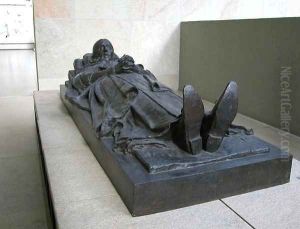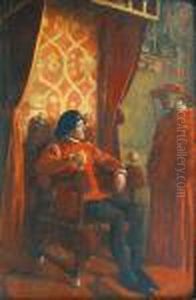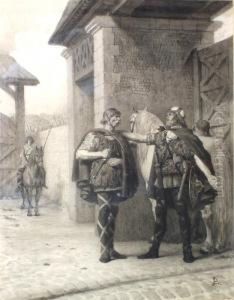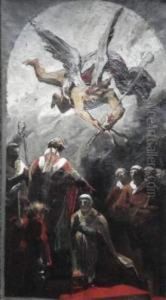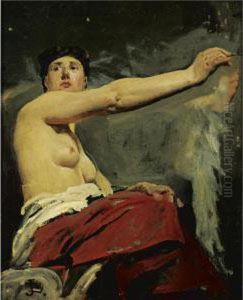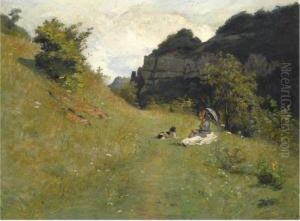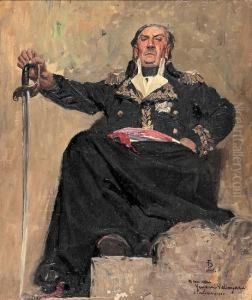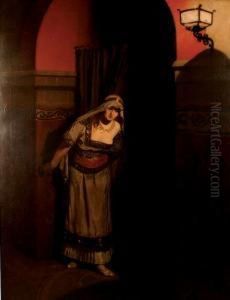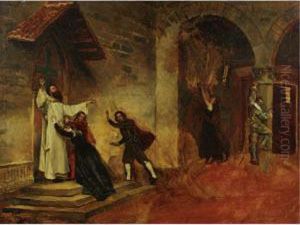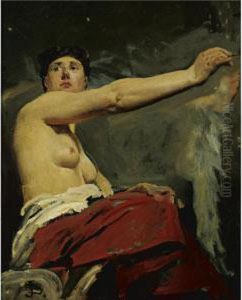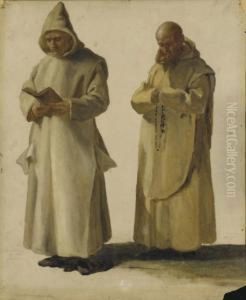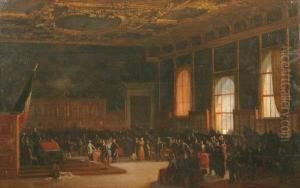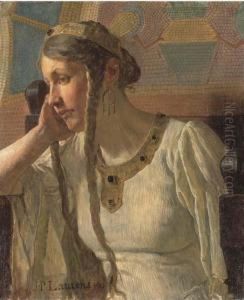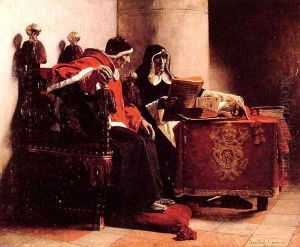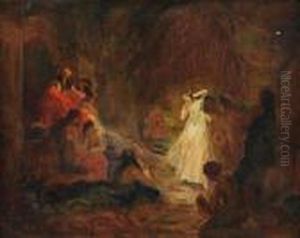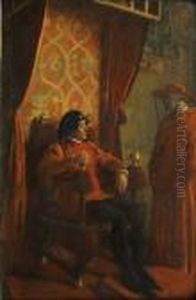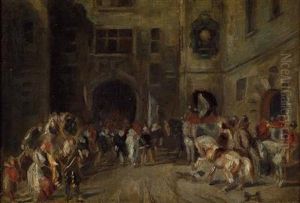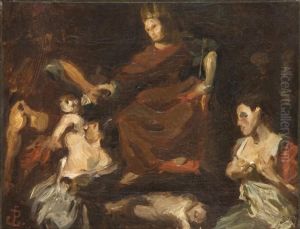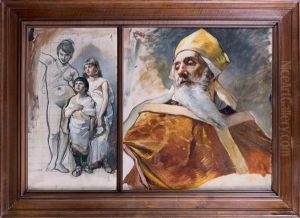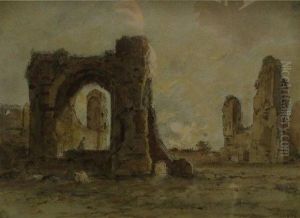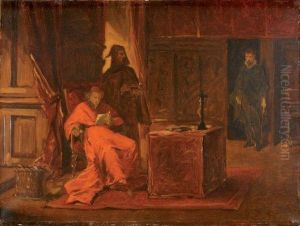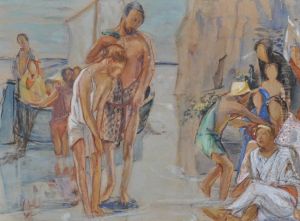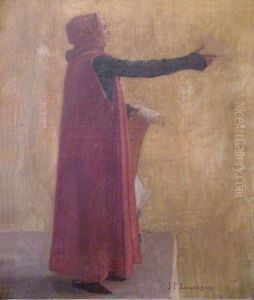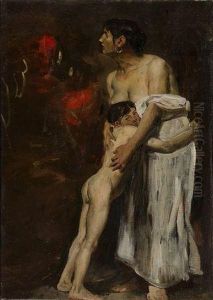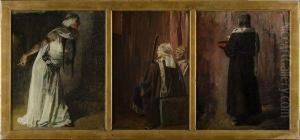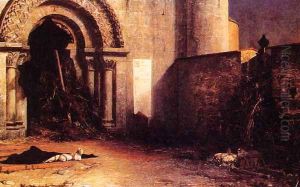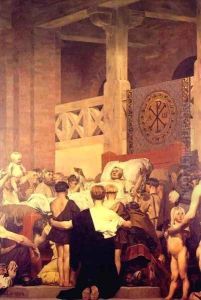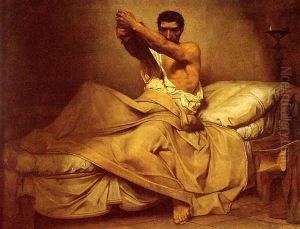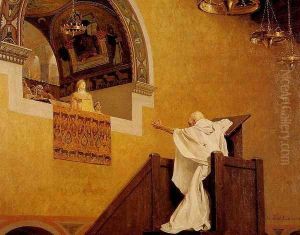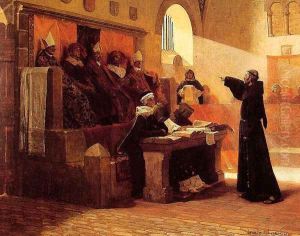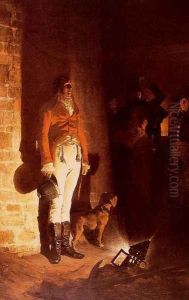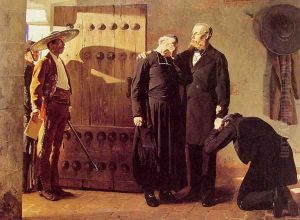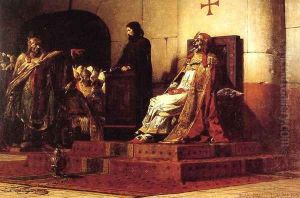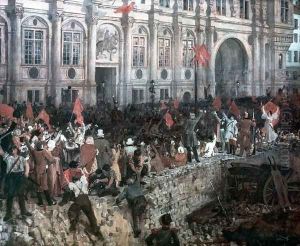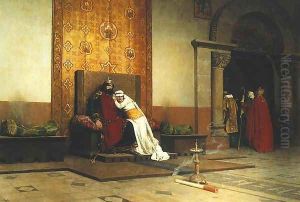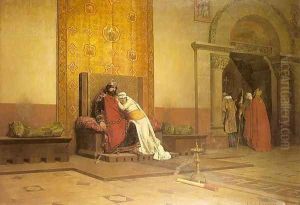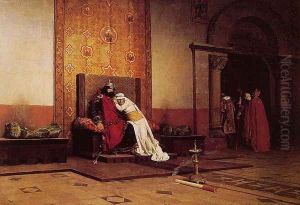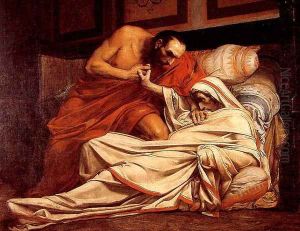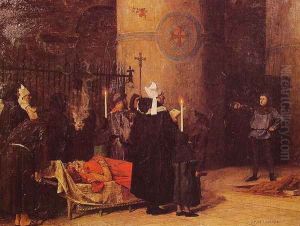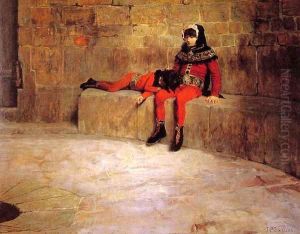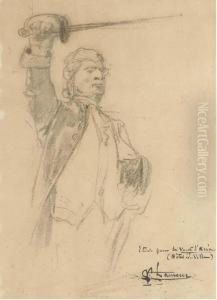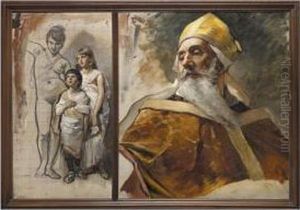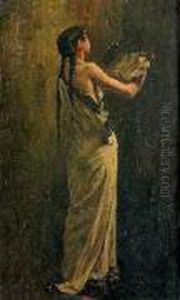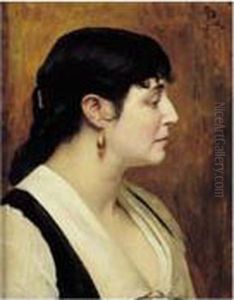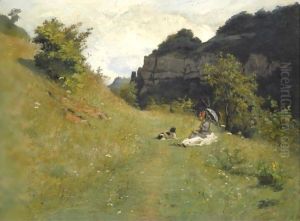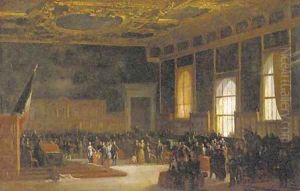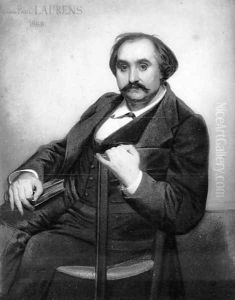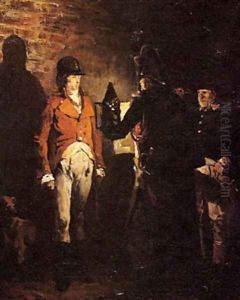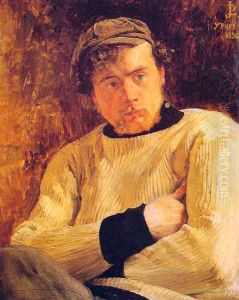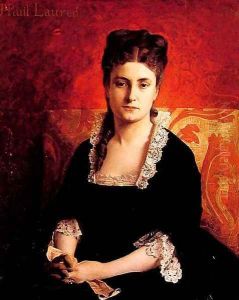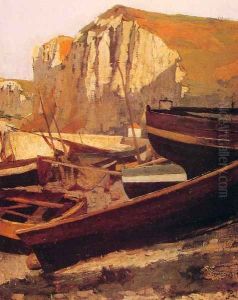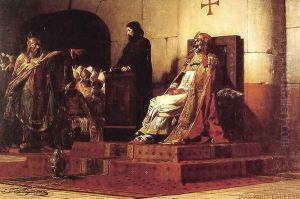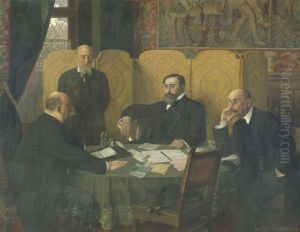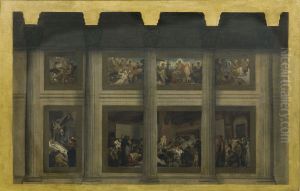Jean-Paul Laurens Paintings
Jean-Paul Laurens was a French painter and sculptor born on March 28, 1838, in Fourquevaux, near Toulouse, France. He was one of the last major exponents of the French academic painting tradition, particularly known for his historical and religious works.
Laurens studied in Toulouse at the École des Beaux-Arts before moving to Paris, where he continued his education at the École des Beaux-Arts de Paris. He studied under Léon Cogniet and Alexandre Bida. His talent was recognized early, and he won the Prix de Rome in 1864, which allowed him to study at the French Academy in Rome, the Villa Medici, for four years.
During his time in Rome, Laurens was influenced by the historical grandeur of the city and the Renaissance masters. His style became characterized by a dramatic use of light and shadow, and a focus on moments of intense emotion and action in historical narratives. After his return to France, Laurens quickly established himself as a leading history painter.
Laurens' works were often large-scale and included frescoes and panel paintings for public buildings and churches, as well as smaller canvases. Some of his notable works include 'The Excommunication of Robert the Pious' (1875), 'The Last Moments of St. Foy' (1885), and 'The Pope Formosus and Stephen VII' (1870). His paintings are known for their detailed realism and powerful theatricality.
Apart from painting, Laurens also taught at the Académie Julian and the École des Beaux-Arts in Paris, where he influenced a generation of artists, including future leaders of the avant-garde. Despite his commitment to academic art, Laurens' students would go on to explore new styles and movements that diverged significantly from their teacher's traditionalism.
Jean-Paul Laurens died on March 23, 1921, in Paris. By the time of his death, his style had fallen out of favor, overshadowed by the rise of modernism. Nevertheless, his work remains an important part of the narrative of 19th-century French art, and his contributions to religious and historical painting are still recognized for their craftsmanship and dramatic intensity.
![Madame Jean-Paul Laurens, nee Madeleine Willemsens [detail #2]](https://www.niceartgallery.com/imgs/211889/s/jeanpaul-laurens-madame-jeanpaul-laurens-nee-madeleine-willemsens-detail-2-8b8fef45.jpg)
![Madame Jean-Paul Laurens, nee Madeleine Willemsens [detail #1]](https://www.niceartgallery.com/imgs/211885/s/jeanpaul-laurens-madame-jeanpaul-laurens-nee-madeleine-willemsens-detail-1-6b46ff22.jpg)
